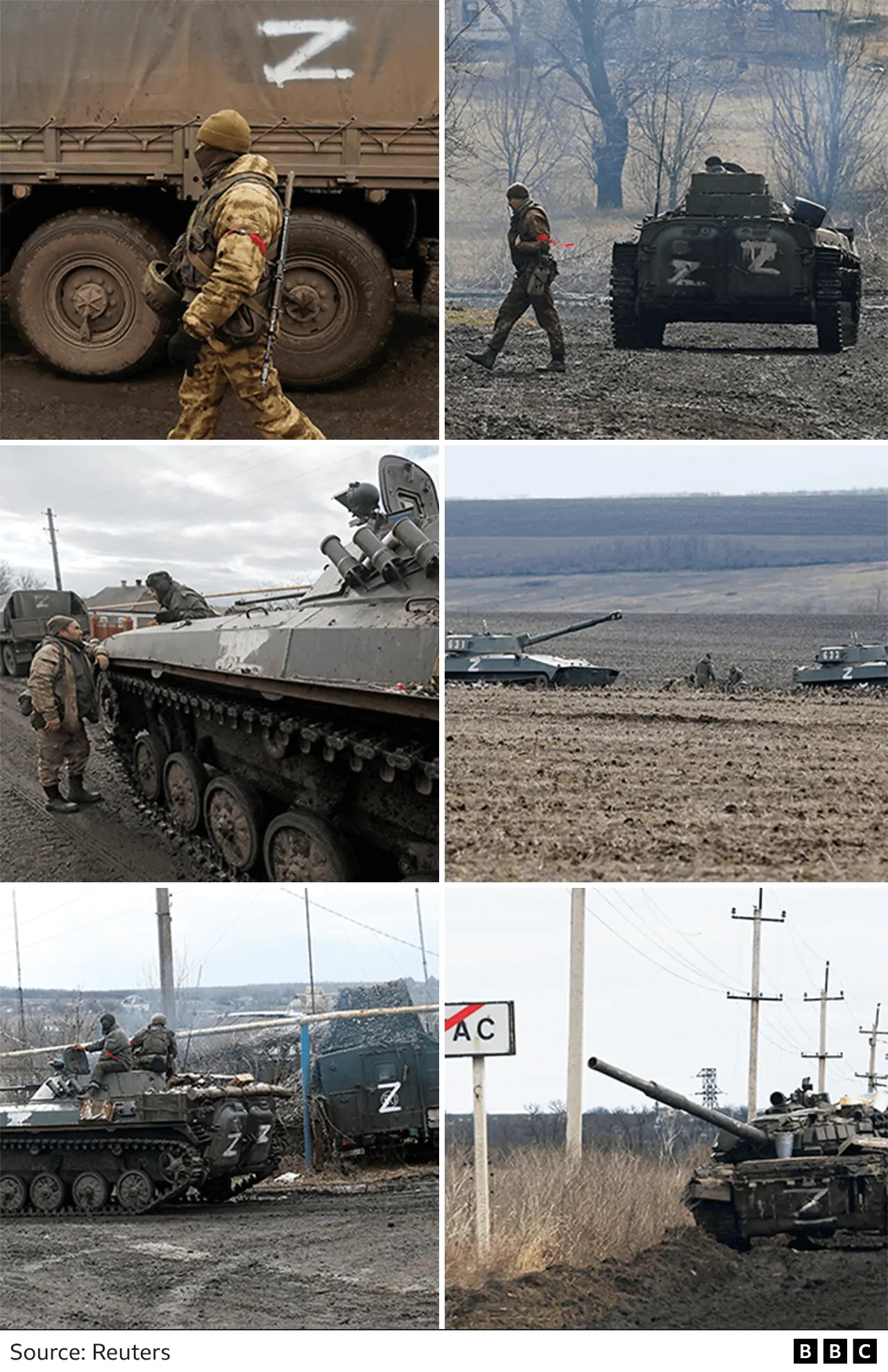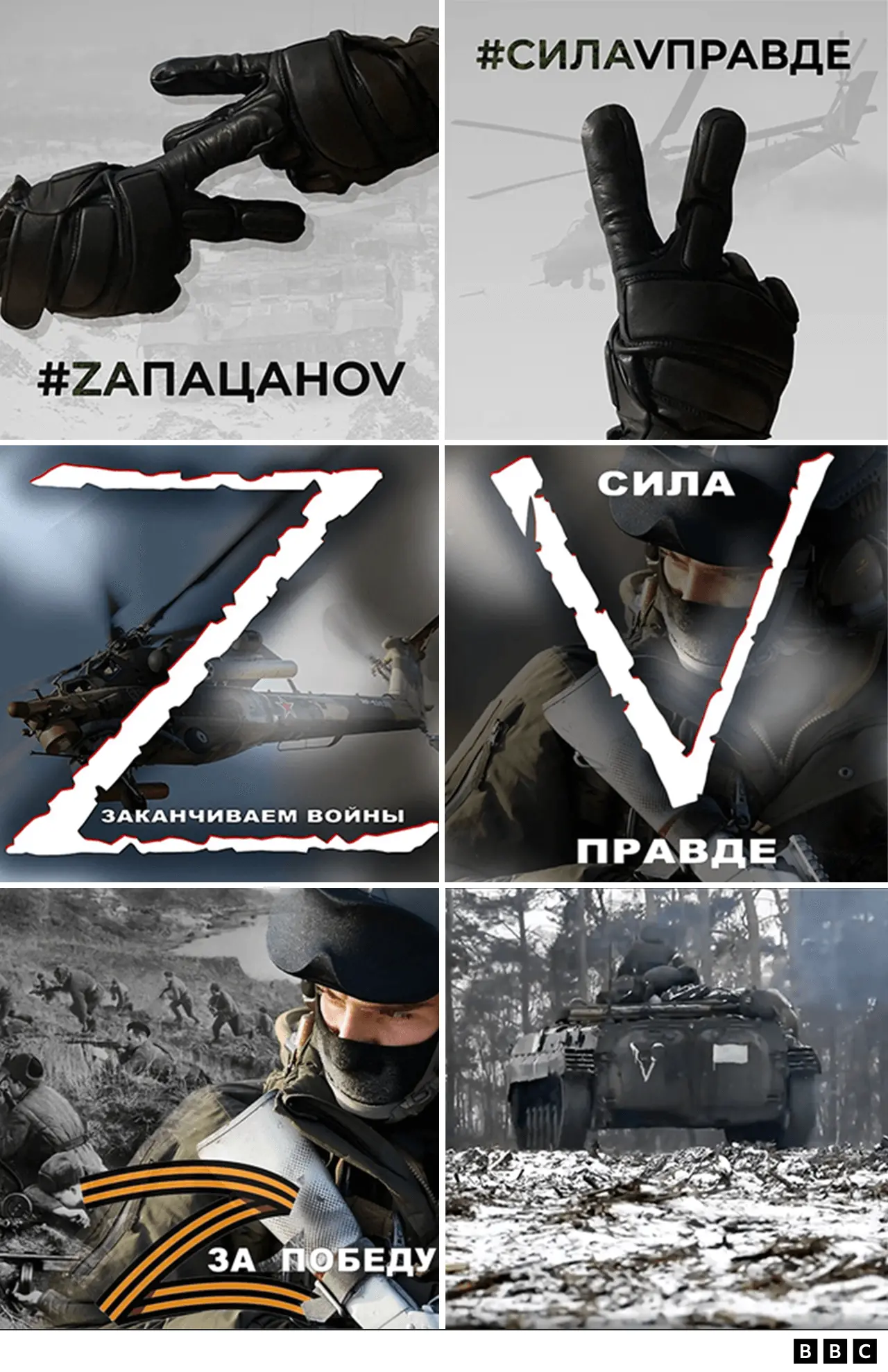Ukraine war: Why has 'Z' become a Russian pro-war symbol?
 BBC
BBCRussian gymnast Ivan Kuliak is facing disciplinary proceedings by the International Gymnastics Federation (FIG) for displaying the letter "Z" on the podium next to a Ukrainian rival in Qatar. But what does the symbol mean?
In Russia, the "Z" is fast becoming seen as a staunchly pro-war symbol of President Putin's invasion of Ukraine. It has been sported by politicians, seen on the sides of cars, vans and advertising hoardings - as well as daubed on bus shelters. It has even been used by Serbs at pro-Russian demonstration in Belgrade. Photographs have been widely shared on social media.


It has become a social media conversation, says Aglaya Snetkova, a lecturer in international politics at the School of Slavonic and Eastern European Studies at UCL. "In many ways, this shows the extent to which Russia is, or has been, very much part of the global world."
While zed in the Russian Cyrillic alphabet is written differently - and looks like a 3 - most Russians recognise Latin letters. Emily Ferris - Russia and Eurasia research fellow at the Royal United Services Institute (RUSI) - says the "Z" is a powerful and easily recognisable symbol.
"Often with propaganda the simplest things catch on the quickest," she says. "It looks rather intimidating and quite stark. From an aesthetic perspective, it's a very powerful symbol."
It has taken less than a fortnight for the "Z" to spread among those supportive of President Putin's invasion.
In the central Russian city of Kazan, about 60 children and staff at a hospice were photographed outside in the snow forming a giant "Z" in front of their building.


Several theories have circulated as to what the "Z" symbol actually means. It first caught attention on social media after Russian tanks with "Zs" on the side were spotted en route to Ukraine.
Initially, it was thought that the "Z" was in fact a number "2" - representing the 22 February (22/02/2022). That was the day Russia ratified an agreement on "friendship, cooperation and mutual assistance" with the self-proclaimed breakaway regions in eastern Ukraine - Donetsk and Luhansk.
But it is now believed the symbol is simply a way for Russia's military to identify its own forces.
Last week, viewers to a news programme on Russia's state-controlled Channel One were told that a "Z" was a common marking on Russian military equipment. The Orthodox Christian pro-Putin website Tsargrad told readers the simple marking could "avoid friendly fire" and couldn't be "mixed up with anything else".
Russian special forces veteran Sergey Kuvykin told the Russian magazine website, Life, that different symbols signified different military units. "Symbols like these are used - a 'Z' in a square, a 'Z' in a circle, a 'Z' with a star or simply 'Z' on its own." He said the markings helped make sure that troops, who might not be in contact with other comrades, were where they should be.
Russian warplanes fly too quickly to see the daubed white markings, says US Air Force Lt Col Tyson Wetzel - a senior Air Force fellow with The Atlantic Council think tank. But, in an interview with the Task and Purpose website, he agrees the "Zs" are a "de-confliction measure to help prevent fratricide" - friendly fire from Russian attack helicopters or artillery.


The spread of "Z" in Russia has not only been because of social media spontaneity - cautions Aglaya Snetkov from UCL.
"It has also been pushed by the regime."
One Russian politician, Maria Butina, shared a video of how to write the "Z" insignia on a business jacket - she explains - "so you can go into work and show it to everyone without shouting about it."
But Ms Snetkov says the symbol shouldn't be seen as fascist. "There are lots of memes transforming the 'Z' into a swastika, but that's done by people who want to push back against the regime."
And there are other symbols appearing, too.
The letter "V" for instance - also not in the Cyrillic alphabet - appears in posts on the official Instagram account of the Russian department of defence, alongside images of "Zs".
There are written captions. "Za PatsanoV" reads one, meaning "for the lads" - while another says "Sila V pravde", which translates into English as "strength in truth".
One theory is that the two Latin letters might stand for "vostok", meaning east, and "zapad", meaning west. But on social media, it has also been suggested that the Ukrainian military believes the "Z" refers to Russia's "Eastern Forces" - and the "V" to the "Naval infantry".



War in Ukraine: More coverage

Top image: International Gymnastics Federation (FIG)
